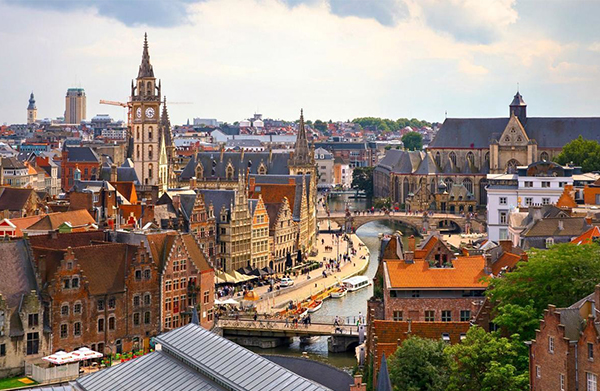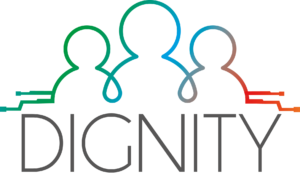The city
The Region of Flanders is an area of about 13 000 km2 situated in the north of Belgium, with 6.5 million inhabitants and a number of mid-sized cities, including Antwerp (500 000 inhabitants), Ghent (257 000 inhabitants) and Bruges (118 000 inhabitants).
In April 2019, the Flemish parliament voted for the decree on basic accessibility. This decree is aimed at making the transport system in Flanders more efficient and more demand-oriented. Creating seamless connections between different transport options (public transport, collective and shared transport systems, bicycles, cars, etc.) is one of the most important yet challenging objectives of the new decree.
The Flemish Department of Mobility and Public Works (DMOW) is responsible for creating a long-term vision of sustainable mobility in the Flemish region and for monitoring and implementing the regional mobility policy, including the implementation of the new decree. In order to accomplish this, it is currently preparing a Mobiliteitscentrale (mobility centre), a MaaS scheme that will be the interface for all trips in the Flemish region by December 2020.
The challenge
All travellers in the Flemish region will be able to plan, book and pay for their journey from A to B, and can contact Mobiliteitscentrale for information, using the application, website, or phone. A mix of on-demand public transport and shared transport options will be developed and connected to meet transport needs, particularly in rural areas. It is crucial that vulnerable-to-exclusion groups, such as the elderly, low-income groups with no access to a car and/or with no driving licence, and disabled people be taken into account in the design of the digital interface of this mobility centre, especially in more rural areas where on-demand public transport is the main transport option. The policy department of the Flemish Department of Mobility and Public Works is in direct contact with various representative organizations of vulnerable groups, ensuring that these groups will be actively involved in the DIGNITY process.
Another element of this new Flemish decree on basic accessibility is the decision to divide the region of Flanders into 15 transport regions, with each transport region required to establish a regional SUMP. The councils of these transport regions consist of local authorities (the municipalities), a representative official from the Flemish Department of Mobility and Public Works, the public transport operator for buses and trams (De Lijn), and the Flemish road administration. Together they will discuss options, create a vision, enable participation and develop their mobility action plans.
The vision
Because there are so many different public and private service providers involved in developing the Mobiliteitscentrale, the scenario-building process is of particular interest to the Flanders region, and will be tested in one of the fifteen newly-installed Flemish transport regions who are currently setting up their SUMP.
The inclusive design wheel approach will be used to analyse the challenges of creating fully inclusive digital transport. There are two options for this: the first is the implementation of the wheel process in the region of Antwerp, to assess the uptake of its MaaS scheme by vulnerable-to-exclusion groups and figure out how to make it more inclusive. The second is to apply the inclusive design wheel principles in designing the new region-wide Mobiliteitscentrale, a full MaaS scheme with digital multimodal planning, reservations, and ticketing.
Before being able to design an inclusive digital interface that serves all travellers, the policy department of the Flemish Department of Mobility and Public Works needs to clarify the nature and size of the challenge. The nationwide quantified insight into the digital transport gap (the DIGNITY survey) and a more in-depth research into the needs of specific vulnerable-to-exclusion groups with regard to the use of digital services and products will go a long way towards bridging that gap in Flanders.
Expected impacts
- The development of a digital inclusion policy strategy which can be applied by app designers, public transport operators, MaaS operators, and different transport regions.
- Guidelines for the implementation of an inclusive digital interface for the Flemish Mobiliteitscentrale and for the design of solutions regarding inclusive digital mobility products and services.
- An assessment of the current digital transport eco-system in Flanders and quantification of the digital gap.
- Insights into the needs of vulnerable-to-exclusion groups and the barriers they face in using digital mobility products and services.

Local actors
- Policy department of the Flemish administration on Mobility and Public Works;
- Contractor/executor of the mobility centre;
- Representatives from the 15 transport regions;
- De Lijn: bus and tram operator in Flanders, co-operator of Blue Mobility (bike sharing system and co-operator of Cambio);
- Mobar vzw: operator for adapted transport (on-demand for special needs);
- Inter: centre for governmental expertise in inclusive design;
- Taxistop: shared transport provider;
- End user organisations representing vulnerable-to-exclusion groups;
- Public or shared transport app designers: Olympus, De Lijn, etc.

